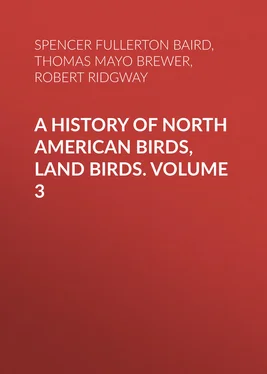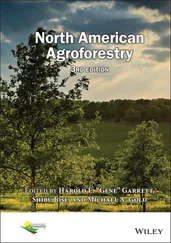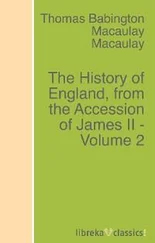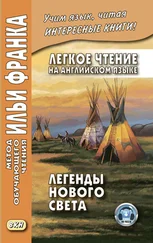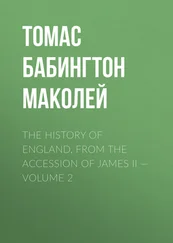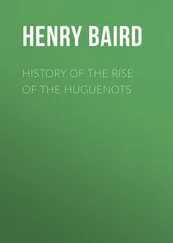Spencer Fullerton Baird - A History of North American Birds, Land Birds. Volume 3
Здесь есть возможность читать онлайн «Spencer Fullerton Baird - A History of North American Birds, Land Birds. Volume 3» — ознакомительный отрывок электронной книги совершенно бесплатно, а после прочтения отрывка купить полную версию. В некоторых случаях можно слушать аудио, скачать через торрент в формате fb2 и присутствует краткое содержание. Жанр: foreign_antique, Биология, foreign_edu, на английском языке. Описание произведения, (предисловие) а так же отзывы посетителей доступны на портале библиотеки ЛибКат.
- Название:A History of North American Birds, Land Birds. Volume 3
- Автор:
- Жанр:
- Год:неизвестен
- ISBN:нет данных
- Рейтинг книги:5 / 5. Голосов: 1
-
Избранное:Добавить в избранное
- Отзывы:
-
Ваша оценка:
- 100
- 1
- 2
- 3
- 4
- 5
A History of North American Birds, Land Birds. Volume 3: краткое содержание, описание и аннотация
Предлагаем к чтению аннотацию, описание, краткое содержание или предисловие (зависит от того, что написал сам автор книги «A History of North American Birds, Land Birds. Volume 3»). Если вы не нашли необходимую информацию о книге — напишите в комментариях, мы постараемся отыскать её.
A History of North American Birds, Land Birds. Volume 3 — читать онлайн ознакомительный отрывок
Ниже представлен текст книги, разбитый по страницам. Система сохранения места последней прочитанной страницы, позволяет с удобством читать онлайн бесплатно книгу «A History of North American Birds, Land Birds. Volume 3», без необходимости каждый раз заново искать на чём Вы остановились. Поставьте закладку, и сможете в любой момент перейти на страницу, на которой закончили чтение.
Интервал:
Закладка:
Icthierax , Kaup, 1844. (Type, Falco frontalis , Daud.)

51293, ♂. ¼
F. aurantius.
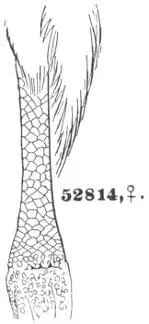
52814, ♀.
F. rufigularis (nat. size).
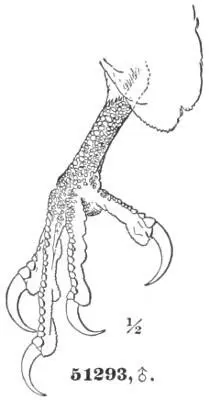
51293, ♂. ½
F. aurantius.

51293, ♂. nat. size.
F. aurantius.

52814, ♀.
F. rufigularis (nat. size).
The following synopsis of the three American species of this subgenus may serve to distinguish them from each other, though only two of them ( F. aurantius and F. rufigularis ) are very closely related. The comparative characters of the several geographical races of the other one ( F. communis ), which is cosmopolitan in its habitat, being included under the head of that species, may explain the reasons why they are separated from each other.
A.First and second quills equal and longest; first with inner web emarginated, second with inner web slightly sinuated. Young with longitudinal stripes on the lower parts. Adult and young stages very different.
1. F. communis.Wing, 11.50–14.30; tail, 7.00–8.50; culmen, .72–.95; tarsus, 1.65–2.20; middle toe, 1.80–2.30. 52Second quill longest; first shorter than, equal to, or longer than third. Adult. Above plumbeous, darker anteriorly, lighter and more bluish posteriorly; anteriorly plain, posteriorly with darker transverse bars, these growing more sharply defined towards the tail. Beneath ochraceous-white, varying in tint from nearly pure white to deep ochraceous, those portions posterior to the jugulum transversely barred, more or less, with blackish or dark plumbeous; anterior lower parts (from the breast forward) without transverse bars. Young. No transverse bars on the body, above or below. Above blackish-brown, varying to black, the feathers usually bordered terminally with ochraceous or rusty; forehead usually more or less washed with the same. Beneath ochraceous, varying in shade; the whole surface with longitudinal stripes of blackish. Inner webs of tail-feathers and primaries with numerous transverse elliptical spots of ochraceous. Hab. Cosmopolitan.
a. Young dark brown above, the feathers bordered with rusty or whitish. Beneath white or ochraceous, with narrow longitudinal stripes of dusky. Inner webs of tail-feathers with transverse bars.
Auriculars white, cutting off the black of the cheeks with a prominent “mustache.”
Beneath pure white, the breast and middle of the abdomen without markings. Wing, 12.75; tail, 7.30; culmen, .80; tarsus, 2.00; middle toe, 1.80. Hab. Eastern Asia … var. orientalist . 53
Beneath pale ochraceous, the breast always with longitudinal dashes, or elliptical spots, of dusky; middle of abdomen barred. Wing, 11.50–14.30; tail, 7.00–8.50; culmen, .72–.95; tarsus, 1.65–2.20; middle toe, 1.80–2.30. Hab. Europe … var. communis . 54
Beneath varying from deep ochraceous to nearly pure white, the breast never with distinct longitudinal or other spots, usually with none at all. Middle of abdomen barred, or not. Wing, 11.30–14.75; tail, 6.00–9.00; culmen, .75–1.00; tarsus, 1.60–2.10; middle toe, 1.75–2.20. Hab. America (entire continent) … var. anatum .
Auriculars black, nearly, or quite, as far down as the lower end of the “mustache.”
Beneath varying from deep ochraceous to white, the breast streaked or not. Lower parts more uniformly and heavily barred than in the other races. Young with narrower streaks beneath. Wing, 11.15–12.60; tail, 6.11–8.00; culmen, .81–.90; tarsus, 1.60–2.05; middle toe, 1.75–2.15. Hab . Australia … var. melanogenys . 55
b. Young unvariegated brownish-black above. Beneath brownish-black, faintly streaked with white, or nearly unvariegated. Inner webs of tail-feathers without transverse bars.
Wing, 14.90–15.09; tail, 8.50; culmen, .95–1.00; tarsus, 2.10; middle toe, 2.15–2.21. Hab. Northwest coast of North America, from Oregon to Sitka … var. pealei .
B.Second quill longest; first with inner web emarginated, the second with inner web not sinuated. Young without longitudinal stripes on lower parts. Adult and young stages hardly appreciably different.
Above plumbeous or black; beneath black from the jugulum to the tibiæ, with transverse bars of white, ochraceous, or rufous; throat and jugulum white, white and rufous, or wholly ochraceous, with a semicircular outline posteriorly; tibiæ, anal region, and crissum uniform deep rufous, or spotted with black on an ochraceous or a white and rufous ground. Adult. Plumbeous above, the feathers darker centrally, and with obscure darker bars posteriorly; jugulum immaculate. Young. Black above, the feathers bordered terminally with rusty, or else dark plumbeous without transverse bars; jugulum with longitudinal streaks.
2. F aurantius. 56Wing, 9.50–12.00; tail, 5.40–6.25; culmen, .96; tarsus, 1.50–1.60; middle toe, 1.75–2.10. Second quill longest; first longer than third. Crissum ochraceous, or white and rufous, with large transverse spots of black; upper tail-coverts sharply barred with pure white or pale ash. Adult. Above plumbeous-black, the feathers conspicuously bordered with plumbeous-blue. Throat and jugulum immaculate; white centrally and anteriorly, deep rufous laterally and posteriorly. Tibiæ plain rufous. Young. Above uniform dull black, the feathers sometimes bordered inconspicuously with rusty. Throat and jugulum varying from white to ochraceous or rufous (this always deepest laterally and posteriorly). Tibiæ sometimes thickly spotted transversely with black. Hab. Tropical America, north to Southern Mexico.
3. F. rufigularis. 57Wing, 7.20–9.00 (♂, wing, 7.70; tail, 3.95–5.50; culmen, .45–.58; tarsus, 1.20–1.55; middle toe, 1.15–1.40). Second quill longest; first longer than third. Crissum uniform deep reddish-rufous, rarely barred with white and dusky. Upper tail-coverts obsoletely barred with plumbeous.
Adult. Above plumbeous-black, the feathers lightening into plumbeous-blue on the edges and ends, and showing obscure bars on the posterior portions. Throat and jugulum ochraceous-white, the ochraceous tinge deepest posteriorly and without any streaks. Young. Above plumbeous-black, without lighter obscure bars, or with a brownish cast, and with faint rusty edges to the feathers. Throat and jugulum deep soft ochraceous, deepest laterally, the posterior portion usually with a few longitudinal streaks of dusky. Hab. Tropical America, north to Middle Mexico.
? Accipiter falco maculatus , Briss. Orn. I, 329. ? Falco nævius , Gmel. S. N. 1789, 271. Falco communis ζ, and F. communis η, Lath. Ind. Orn. p. 31. Falco communis , Coues, Key, 1872, 213, f. 141. Falco peregrinus , Ord. Wils. Am. Orn. 1808, pl. lxvi.—Sab. L. Trans. XII, 529.—Rich. Parry’s 2d Voy. App. 342.—Ib. F. B. A. II, 1831, 23.—Bonap. N. Y. Lyc. II, 27.—Ib. Isis, 1832, 1136; Consp. 1850, 23, No. 4.—King, Voy. Beag. I, 1839, 532.—James. Wils. Am. Orn. 677, Synop. 1852, 683.—Wedderb. Jard. Contr. to Orn. 1849, 81.—Woodh. Sitgr. Zuñi, 1853, 60.—Giraud, B. Long Island, 1844, 14.—Peale, U. S. Ex. Ex. 1848, 66.—Gray, List B. Brit. Mus. 1841, 51. Falco anatum , Bonap. Eur. & N. Am. B. 1838, 4.—Ib. Rev. Zoöl. 1850, 484.—Bridg. Proc. Zoöl. Soc. pl. xi, 109.—Ib. Ann. N. H. XIII, 499.—Gosse, B. Jam. 1847, 16.—Cass. B. Cal. & Tex. 1854, 86.—Ib. Birds N. Am. 1858, 7.—De Kay, Zoöl. N. Y. II, 13, pl. iii, f. 8.—Nutt. Man. 1833, 53.—Peab. B. Mass. 1841, 83.—Strickl. Orn. Syn. I, 1855, 83.—Blakist. Ibis, III, 1861, 315.—March, Pr. Ac. N. S. 1863, 304. Falco nigriceps , Cass. B. Cal. & Tex. I, 1853, 87.—Ib. Birds N. Am. 1858, 8.—Strickl. Orn. Syn. I, 85.—Coop. & Suckl. P. R. R. Rep’t, VII, ii, 1860, 142.—Gray, Hand List, I, 1869, 19, No. 166.—Sharpe, Ann. & Mag. N. H. Falco orientalis , (Gm.) Gray, Hand List, I, 1869, 19, No. 165 (in part). ? Falco cassini , Sharpe, Ann. & Mag. N. H.
Читать дальшеИнтервал:
Закладка:
Похожие книги на «A History of North American Birds, Land Birds. Volume 3»
Представляем Вашему вниманию похожие книги на «A History of North American Birds, Land Birds. Volume 3» списком для выбора. Мы отобрали схожую по названию и смыслу литературу в надежде предоставить читателям больше вариантов отыскать новые, интересные, ещё непрочитанные произведения.
Обсуждение, отзывы о книге «A History of North American Birds, Land Birds. Volume 3» и просто собственные мнения читателей. Оставьте ваши комментарии, напишите, что Вы думаете о произведении, его смысле или главных героях. Укажите что конкретно понравилось, а что нет, и почему Вы так считаете.
